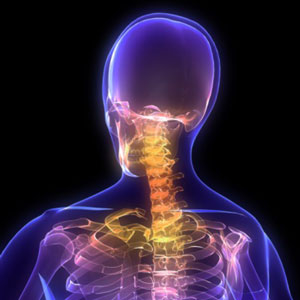The Craniocervical Junction
 The Craniocervical Junction is a complex region where the skull and upper cervical spine connect.
The Craniocervical Junction is a complex region where the skull and upper cervical spine connect.
It is composed of 2 joints–the atlantooccipital and the atlantoaxial joints–and houses the spinal cord, multiple cranial nerves, and many important blood and lymphatic vessels that supply the head and neck.
Thus, the CCJ must protect its contents while simultaneously allowing significant head and neck mobility.
Neural tissue is flexible and susceptible to compression. Craniocervical junction abnormalities can cause or contribute to cervical spinal cord or brain stem compression. A landmark paper published in the Neurology Research International revealed astonishing relationships between biomechanical abnormalities of this region and systemic heath issues and conditions.
CONTACT US
“The Craniocervical Junction (CCJ) is a potential choke point for craniospinal hydrodynamics and may play a causative or contributory role in the pathogenesis and progression of neurodegenerative diseases such as Alzheimer’s disease, Parkinson’s disease, MS, and ALS, as well as many other neurological conditions.”
“Malformations and misalignments of the craniocervical junction cause both deformation and obstruction between the cranial vault and the spinal canal that can result in neurological disorders including hydrocephalus, idiopathic intracranial hypertension, migraines, seizures, silent-strokes, affective disorders, schizophrenia, and psychosis.”
Flanagan, M. The Role of the Craniocervical Junction in Craniospinal
Hydrodynamics and Neurodegenerative Conditions
A growing body of scientific research is demonstrating the relationship between spinal function and systemic health. Anatomical abnormalities of the cervical spine at the level of the atlas vertebra are associated with relative ischemia of the brainstem circulation and increased blood pressure. Manual correction of this misalignment has been associated with reduced arterial pressure.
JOURNAL OF HUMAN HYPERTENSION
Bakris, G. Dickholtz, M. 2007
“With few exceptions, hormone deficiency or hormone excess is the result of pathologic manifestations in the neural pathways that supply the hypothalamus.”
PRINCIPLES OF INTERNAL MEDICINE
